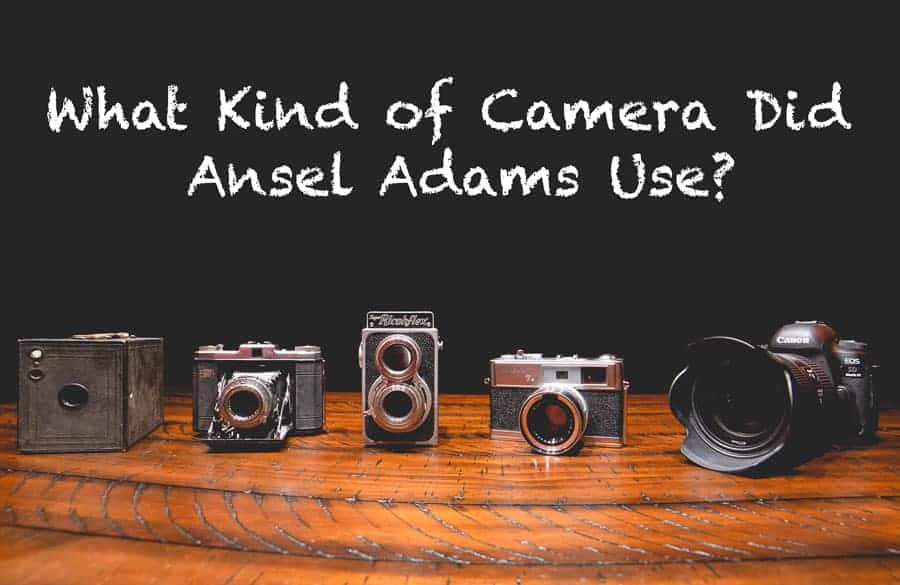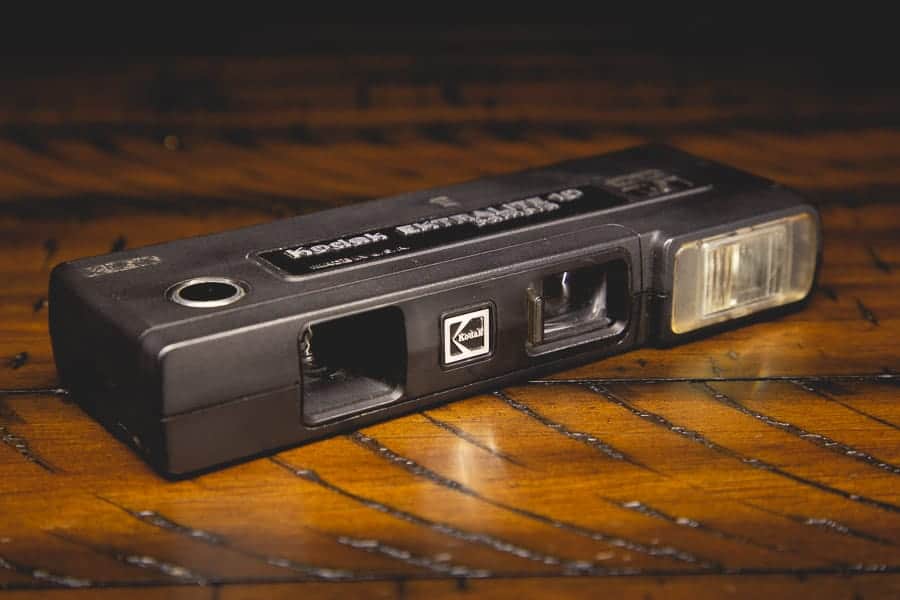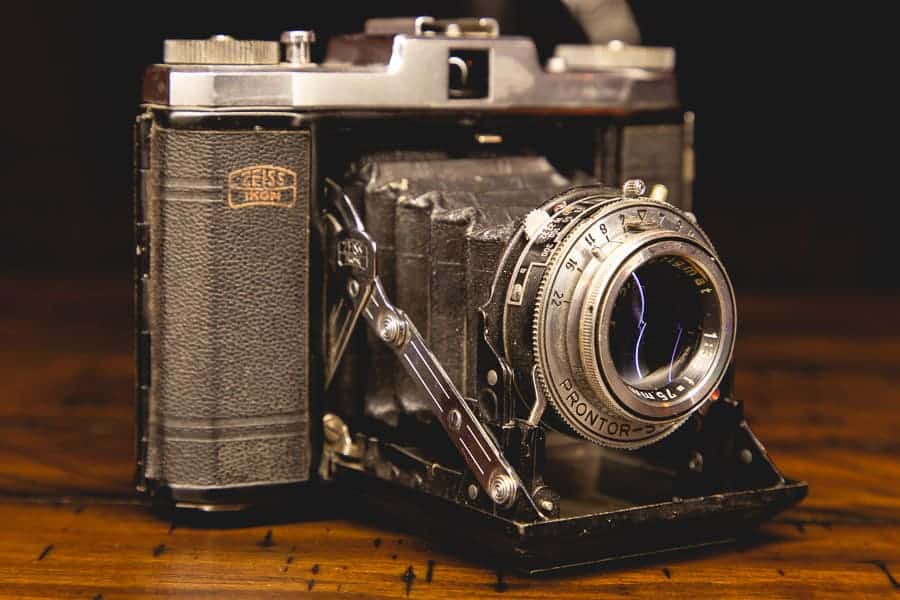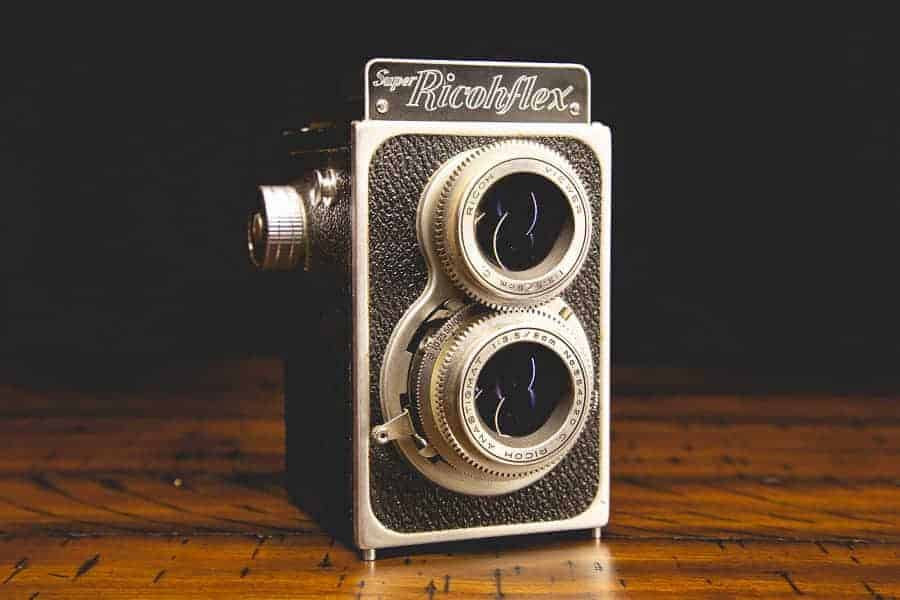What Kind Of Camera Did Ansel Adams Use

It would exist like shooting fish in a barrel to come out and just say "Ansel Adams' Camera was a Deardorf 8×10 View Photographic camera or a Hassleblad 500c Medium Format or any number of 4×5 cameras and 35 mm cameras among many other formats." All would be true.
Like most of u.s.a. today, he wasn't express to just one specific slice of equipment. In fact, information technology wouldn't even be safe to say that he favored i photographic camera system over any other. Each had their role and Adams was always careful to exist sure to use the correct tool for the task at mitt.
In his book "The Camera" Adams discusses the importance of "…some understanding of the nature of diverse camera designs and their capabilities, in the hope that the photographer volition consider these discussions in the context of his or her individual intentions and style." This is a sentiment that is echoed today. A solid concept of visualization of the desired result is then followed by the photographer using the correct equipment for the task. However, one will notice that they will tend to see the world a little differently depending on the equipment they accept at hand to capture the moment.
I relied on a variety of sources when researching this topic. These included the Ansel Adams Gallery Website also as various pages on Wikipedia and across the cyberspace. The pages are utilized primarily for links to images of the various systems. Images which are non included hither then as not to infringe on any copyrights.
The richest source of information with the technical details almost the equipment and capture (as well as processing) of some of Adams' best known works was the book titled Examples: The Making of 40 Photographs. The Camera (The Ansel Adams Photography Series ane) is some other neat resource on the topic. I Highly recommend picking upwards these books if you are at all interested in the stories behind these photos. They serve equally a groovy companion read to this commodity, or really, the other style effectually.
A Quick Note on Lenses and Field of View
I didn't focus on lenses for this commodity every bit I didn't recollect going that far down the rabbit pigsty would add a lot of value. Adams had numerous lenses in his collections over the years and just as we do today, he took care to be sure to utilize the specific lens that the state of affairs called for. This was all function of the "pre-visualization".
Should you cull to dig into the topic, you will find that the focal lengths used on the larger format cameras (particularly the 4×5's and the eight×10's) are vastly different than what you lot may be used to. Beginning, Ansel usually references them in inches rather than millimeters. Also, with those larger formats, they have much longer focal lengths. An eight x 10 photographic camera has a ingather factor of roughly 0.i giving a 300mm lens the aforementioned field of view equally a 30mm lens on an full frame camera.
This brings upwards the overall larger topic of Field of View. Field of View could exist an article all past itself, just I desire to address it very quickly here. The key is but that there is a larger area capturing light than what we may typically be used to in the digital age.
The frame sizes of the film used by Ansel Adams and others who employed (and however do) the larger format cameras are much larger. They can be compared to sensor size if you want to think of it that way.

Ansel's Outset Camera
If yous're like me, you probably remember the first camera you ever used. The experience of creating your first image is something that sort of sticks with you lot and information technology can be intoxicating and addicting to say the least. Fifty-fifty my ii children (ages 4 and 2) have been taking photos and loving it. Not surprisingly, their first photographic camera experiences were with iPhones and iPads. Quite a bit dissimilar than my outset experience and probably yours likewise.
Ansel's first photographic camera was quite a bit different again. Possibly. According to his biography page on the Ansel Adams Website, his first camera was a Kodak No. ane Brownie Box camera. The original info page on this camera is archived on the Wayback Machine and has some interesting information most the camera. It shot 117 format flick (defunct) which is very similar to 120 with a slightly different spool.

These Credibility Box Cameras (oft referred to every bit "the nigh important cardboard box ever") are withal available in various conditions on sites like eBay and antiquarian stores with fairly inexpensive toll tags. I frequent antique stores and see them on every trip.

According to his account in "The Photographic camera" Ansel's start "serious camera" was a Kodak Speed Graphic in 2 ¼ past 4 ¼ inch format.
View Cameras
The eight×10 (viii inches past 10 inches) format was definitely a favorite of Adams. These cameras come in many form factors. The setup consists of a front standard which holds a board containing the lens and a rear standard which holds the film holders with picture show sheets pre-loaded and protected from exposure past apply of a dark slide.
The 4×5 inch versions are similar in pattern and operation, though they are much smaller and record images onto 4 by 5 inch movie sheets. Call back of it every bit a unlike sensor size, both of which are MUCH larger than what we are used to in the digital age.
Between the two standards is a bellows, which is an piano accordion like device that is calorie-free tight and allows the front end standard to be positioned closer to or further from the rear standard. This in and out motion is how the photographic camera achieves focus.
The cameras besides usually allow for specialized movements of the front and rear standards to manipulate depth of field by tilting the focus plane and perspective by shifting the lens upward or downward. If this chip sounds familiar, its exactly the aforementioned mode a tilt-shift lens works.
The rear standard movements may also be employed to accomplish distortion corrections by repositioning the flick plane rather than the lens.
There are two master form factors for these cameras. The mono-rail cameras achieve movement by having the front standard slide along a rails onto which information technology is clamped. The other course cistron, consistently used by Adams is the field camera which folds up into a suitcase like box for "easy" transport.
View Cameras Noted:
six ½ x 8 ½ Korona View Camera
4 x 5 Korona View Photographic camera
5 x 7 and 3 ¼ x 4 ¼ Zeiss Juwel
5 x 7 Linhof
v x vii & 8 x 10 Deardorff
4 10 v Speed Graphic
Using a View Camera
To have a photo with this blazon of photographic camera, Adams would ready the camera and use the ground glass at the motion picture aeroplane to compose his shot and achieve focus. Footing glass is a semi-transparent slice of glass which the image from the lens shows upwards inverted. It gives the lensman a preview of what their image will await like.
From here a film holder is loaded and the night slide removed. Metering of the scene is critical with these systems and Adams e'er (most) used his trusty Weston Exposure Meter. I say "almost" because past Adams' account he couldn't find information technology in time to use information technology for the famous exposure of the Moon Rise over Hernandez. He had to use the known luminosity of the Moon equally his guide forth with some heavy math.
Then, exposure settings are set on the lens and the exposure is made. On these cameras, the shutter lives inside the lens and the lens serves as the gatekeeper for all light entering the camera.
Polaroid
It is safe to say that Adams did a lot of work with diverse Polaroid cameras. He did a lot of consulting work for his friend Edwin State who founded the Polaroid company.
The cameras were unique in that they were the offset to produce "instant prints". There probably isn't a model that came out in the 50's or 60'due south (and even later) that Ansel didn't utilise at ane point or another.
Medium Format
For shots that didn't call for a big format four×5 or 8×ten, Adams would commonly apply cameras that shot the medium square format 6×vi or equally he noted it 2 ¼ inch. This format is legendary in its own correct as information technology served as the inspiration for Instagram'southward square aspect ratio (honey it or hate it).

A couple of cameras in this format that were used regularly by Adams:
Zeiss Ikon Super Ikonta B
Hasselblad 500 c

There were endless variations on medium format sizes used by Adams over the years. He described medium format as "larger than 35mm but smaller than 4×five."
"Small Format"
Adams was no stranger to the format most of us are most familiar with. What he referred to as "pocket-size format" was the 35mm (24mm x 36mm) frame size which has evolved into what we call "Full Frame" today. Near of Adams' 35mm work was in portraiture and he used countless unlike cameras in this format.

Noted 35mm Cameras:
Zeiss Contax I, Ii, Iii, Professional
Zeiss Contarex
Flick Procedure/Darkroom
I would be remiss if I did non mention the latter half of the procedure. Development of the negatives and and so the resulting prints was as important as the actual exposure made in the field. In examples, Adams goes into farthermost detail on how he adult each negative and how he candy the prints.
We however practice this today and it is ever of import as a part of the craft. The divergence today is that we take digital files into a "Lightroom" rather than a darkroom and process them digitally sometimes using the aforementioned processes and techniques (adapted of course) as Adams. Always exercise any dodging and burning? One would have to wonder what kind of images Adams could create if we gave him some digital files, Photoshop and some time to figure it out.
Adams released two other books in his photography series which outline this procedure in item:
The Negative
And
The Print
Would Adams Accept Embraced the Technology Nosotros Utilize Today?
I think the short respond to this is "Yep". Now, camera systems that Ansel would accept used are still used on a surprisingly regular basis today. There are well known photographers who shoot on the 4x5s and even a few who shoot on the 8×10 systems as their principal photographic camera systems!
Would he pick upwardly a total frame mirrorless photographic camera and apply it? I call back he would and I think he would brand great images with it. The gear may accept inverse, but the fundamentals of photography accept not. If you read through his books, you will notice that the technical details of the capture are actually quite familiar.
Ansel may even be interested in something similar the recently announced "8×10" digital camera. Though, the price tag may daze him a fleck… (I mean, it's only $106,000 United states of america)
What Kind Of Camera Did Ansel Adams Use,
Source: https://improvephotography.com/53059/what-kind-of-camera-did-ansel-adams-use/
Posted by: harkinshicle1975.blogspot.com


0 Response to "What Kind Of Camera Did Ansel Adams Use"
Post a Comment